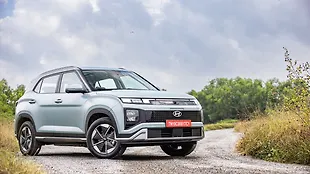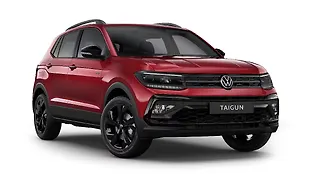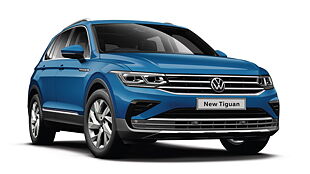Introduction
The Volkswagen Vento is one of those cars in the Indian car market that’s earned a reputation for playing the long game. This car that you are looking at has been around in this very guise for a decade and in that time there’s been a whole host of updates to keep it fresh and relevant. The most recent updated was about a year ago where the Vento got some new features and is now offered only with a 1.0-litre TSI petrol motor.

This time we are going to tell five things that we like about the Volkswagen Vento TSI automatic and two things that we didn’t.
Positives
1. Engine and Gearbox

In the era of BS6, Volkswagen has culled the Vento’s powertrain line up in favour of turbocharged direct injection and in this case, a 1.0-litre TSI unit producing 109bhp/175Nm. It can be had with a six-speed manual or a six-speed torque converter. This combination replaces the legendary 1.2-litre four-pot and seven-speed DSG that had been a mainstay of VW’s performance offerings.

Put the car into D, ease off the brake, and the creep function lets you roll forward with surprising ease. Let the needle Go past the 2,000rpm mark and you will be greeted with a surprising wave of torque that’s linear and unrelenting all the way to the redline. You will hit three-digit speeds quickly, a rather helpful feeling on the highway or even when you need to make your way around slower moving traffic. Of course, it’s not the most perfect system, as when you go hard on the gas, there’s a little bit of lag before the powertrain drops a gear or two and gives you the surge in momentum that you need. What’s more, there’s a sports mode where the revs are held a little longer, allowing for a better build of speed.

But this is a gearbox of dual personalities. Combined with this engine, its strength lies in a strong mid-range with not much effort required to be in the thick of the action. In city conditions, where progress is slow, it’s best to leave the gearbox in D and let it do its thing in the background which it does with good precision and refinement. Even a slight flex on the throttle will give you a sufficient punch for quick overtakes. As we said before, the creep function is pretty strong which means that you need to be a bit cautious while inching forward in bumper-to-bumper traffic or tight parking lots.

Will you really miss the seven-speed DSG and the 1.2-litre engine? Those of you that have driven the Vento TSI AT in the past will be able to tell that this powertrain combination isn’t as refined or smooth as its predecessor but with a view to keeping costs down without dampening the driving experience, this is a worthy substitute.
2. Ride
The Volkswagen Vento both as an MT or as this TSI AT is underpinned by the McPherson struts in front and a semi-independent trailing arm setup at the rear. This top-of-the-line model gets 16-inch wheels and 185/60 section tyres.

The ride quality is on the firmer side at low speeds and this makes things noticeably bumpy if you are tackling bad roads. But go faster and the Vento comes into its own and takes everything in its path without much of a struggle. The smaller bumps and imperfections are done and dusted without sending much back into the cabin. The ground clearance is decent too and despite this slightly low nose, even large speed breakers are not an obstacle if you need to make quick progress.
3. Handling
The Vento has always been a driver’s car among a lot of C-segment sedans currently on sale in India. Volkswagen has managed to find a good balance between comfort and handling, and it bodes well for the Vento. The steering has a certain heft to it which feels reassuring, both when you are attacking corners or navigating your way around massive potholes, craters, and everything in between.

It’s quick and quite accurate for a car in this class and size but, like its sibling the Skoda Rapid, it needs two-and-a-three quarter turns to go from lock-to-lock. This is something that becomes quite evident when you need to make a U-turn or park in a tight space.
4. Exterior Design

We told you at the beginning of this video that the Vento has been around for a decade now. Well, so has its exterior design and this has been punctuated by regular updates over the last 10 years, each of which brought the car up to date with the era. The face gets this slim grille with the Volkswagen logo in the middle while bumper, in this latest update, gets this sporty design which is very similar to what was offered on the previous generation Polo GTi.
5. Build quality

While the Vento might be a slightly old car, it has always had a reputation of being solidly built. It feels solidly built with everything well put together befitting the adage ‘German build quality’. One place where you can see this is when you open and close the doors, both of which are achieved with a reassuring thud.

Negatives
1. Feature list

The feature list of this top-of-the-line Highline Plus AT includes the likes of the climate control, a touchscreen infotainment system with Apple Car Play and Android Auto, cruise control, rain-sensing wipers, height adjustment for the driver’s seat, rear AC vents, two 12V sockets, one litre bottle holders in all doors, power windows and power mirrors, as well as auto-dimming IRVM.

In this day and age, meeting just the segment standard is no longer an impressive achievement. It’s missing features like cooled seats, sunroof, button start, inbuilt connected car technology, full-colour TFT for the instrument cluster, ambient lighting, folding rear seats, and even cup holders in the rear arm rest. This comes even more into focus when you look at how the Vento’s competition has grown in terms of both sedans and SUVs.
2. Dated interiors

The cabin is a black and beige affair with hard-wearing plastics across most of the surfaces. It’s a similar story with the upholstery (also beige) as well as most of the other plastics across the cabin. The centre console stands out due to its silver frame while the steering gets glossy inserts and flat bottom design, a saving grace in what is otherwise a lacklustre front part of the cabin. However, the beige tone helps in uplifting the cabin and gives it an airy feel.

An ergonomic oddity is the positioning of the front driver armrest. It blocks access to the handbrake and you have to reach over it each time to engage the handbrake. Space in the second row is adequate for two in comfort, as the middle occupant will have to contend with a transmission tunnel and the rear AC vents eating into legroom and knee room. It could, however, do with more under-thigh support and more cushioning for the seat base. The Vento is behind all its rivals in terms of dimensions but sitting in the car you do get a decent amount of headroom and shoulder room.
Conclusion

The Vento was the first car that VW developed and brought to India when it began operations here in the previous decade. It’s survived in that same avatar with regular updates over the years to keep it fresh. While that had worked well for a while, it’s started to show its age in terms of quality, especially when looked at against the competition.

In what it is known for- driving dynamics and engine performance- it still right up there, call it if you will, is a driver’s car. The Vento also still feels solidly built backing up the term German build quality. However, when you look at interior quality and the feature list, the Vento’s age starts to show. The quality of materials used in the cabin feels at least a generation behind when compared to the competition and it matches all the basic requirements of the segment in terms of features but not much else.



























